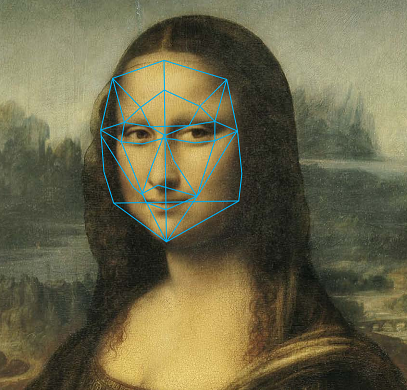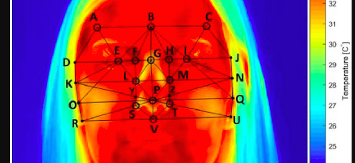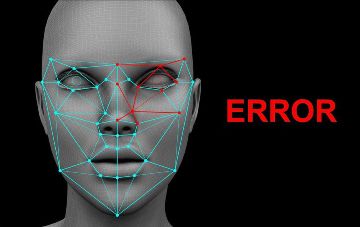 June 2020
June 2020
Recently the subject of facial recognition has been getting a lot of attention.
First developed in the 1960’s Facial Recognition Technology, (FRT) has become one of the most controversial tools in the security industry. Now that it has become available to the mass markets it has the potential to eliminate the need for keys, credit cards, passwords and even fingerprint data. It could also eliminate what little privacy we still have. While it may be the future of policing, banking, medicine and many other industries concern about its use in the wrong hands is justified.
What is facial recognition technology?
FRT is a combination of software and hardware that can map the data points that make up a person’s face and store that information in a database. Much like fingerprint recognition maps the data points of a person’s fingerprint or a retina scan maps the data points of a person’s retina and stores the data. Software compares that data looking for a match in the database.
 FRT has two main configurations that are “tuned” to different purposes in different scenarios.
FRT has two main configurations that are “tuned” to different purposes in different scenarios.
Authentication/Verification
Often called one to one, (1:1) matching in this scenario FRT helps to verify a person is who they claim to be. The system checks a submitted photo against an existing template previously submitted to the database. This configuration is applicable to banking, electronic payment, employee time and attendance, secure building or door access, air travel entry-exit, border crossing systems, passports also preventing fraud and theft.
Identification/Discovery
In this scenario the system compares a photo of an unknown person to a set of existing templates Often referred to as one-to-many, (1:n) matching. This configuration is used to automate the initial step of sifting through large numbers of photos. It is faster, more efficient, objective and accurate than human analysts performing the same initial task prior to reviewing the potential matches.
Since there are so many uses of FRT accuracy thresholds are highly configurable. While you might think that one hundred percent accuracy would be optimal there are legitimate reasons why a user would want to lower that threshold. For example, you are searching for someone who went missing as a child and would be much older in a current photo. In such cases it would be better if the system returned a larger number of matches for human review.
FRT is crucial to the security industry because it greatly enhances the capabilities of solutions like video security, access control and identity management systems for the protection of people, property and information.
Why is there such confusion about FRT?
There is a high degree of variation between the types of FRT. Who uses it, the purpose for which it is used and system settings, (commercial, private security, government and law enforcement). FRT can be very technical and that can cause confusion over terms that may have different meanings in the field versus everyday context. Due to the variety of uses, it is difficult to generalize about the technology and even more difficult to conceive one-size-fits-all policies.

At the same time there are many misconceptions about FRT in the US. These misconceptions are driven not only by movies and TV but also biased media narratives and provocative reports not supported by facts and intended to create a climate of fear and mistrust in the technology, the industry and various public safety agencies. These flawed narratives often cite reported uses of FRT in other nations. Such use is not allowed in the US which has a considerable host of laws and regulations regarding the use of FRT and some jurisdictions have actually banned FRT outright. (It is unclear how they equate that with the widespread use of Smartphone’s with that technology built into the unit.)
The choice between privacy and security is often overstated. As Scott McNealy, co-founder of Sun Microsystems famously stated many years ago, “If you are worried about your privacy get over it”. At this time we have precious little privacy left. When it comes to verification FRT is primarily used in cases where individuals have consented or are required to prove their identities. As a result the identification process is faster and more accurate with no negative impact on privacy. Courts have repeatedly found that there is no reasonable expectation of privacy in public places so cameras and FRT at the mall, school or even just walking down the street are common these days.
But it doesn’t always work.
In the last few years the capability of FRT has improved significantly. The occurrence mismatches and “false positives” have been greatly reduced. This is particularly noticeable when FRT is used to identify women and ethnic minorities. The popular belief that FRT is biased is incorrect and the current FRT systems have a much lower error rate identifying people in those groups than the systems in use even just a few years ago. Statistical errors do not equate to bias. Despite what you may have seen on various TV shows investigative use of FRT is a lengthy and time consuming process. FRT systems help reduce the number of possibilities during the initial search but the final decision is made by people not machines.

It is possible to defeat FRT by simply wearing a hat and sunglasses. Many of the data points used to digitize the image into a template for comparison are around the eyes and the distance to other parts of the face. Face coverings such as the Niqab or Burqa that some Muslim women wear or the Tagelmust worn by the Tuareg Berber men in West Africa render FRT useless. It doesn’t take a rocket scientist to realize that if the face cannot be seen then FRT does not work! These articles of clothing are banned in many European countries
A customer was perplexed by the sudden appearance of some rather graphic porn appearing on his new smart phone. Being a family man and respected member of local business and social groups this could be a serious problem. The “hacker” turned out to be his own son, then about nine years old, The child would interrupt his father while inconspicuously holding the phone saying, “hey dad”. The father would turn around to look at the child and voila, the phone is unlocked. Dad, unaware of the presence of the phone, goes back to doing whatever and the kid has a field day with the phone. Smart phone and smarter kid!

The wide spread use of facemasks, due to the current pandemic and local regulations has sent companies like Apple scrambling to figure out a way for you to unlock your phone while wearing a mask. After years of development to make sure the portable FRT system in the phone was reliable now they have to figure a way to do that when the face is not visible. They are still working on that.
Recently Amazon, Microsoft and other companies have announced that they will stop selling FRT to police departments. This is largely a symbolic gesture due to social pressure from certain political groups. Both Amazon Web Services and Microsoft Azure offer FRT to the general public. Remember that FRT has been around longer than ether Amazon or Microsoft. After the mayhem subsides look for these companies to quietly resume working with police departments since it is in all their best interest.
For more information on the technology and availability of FRT check out these links:
And remember — always back it up!